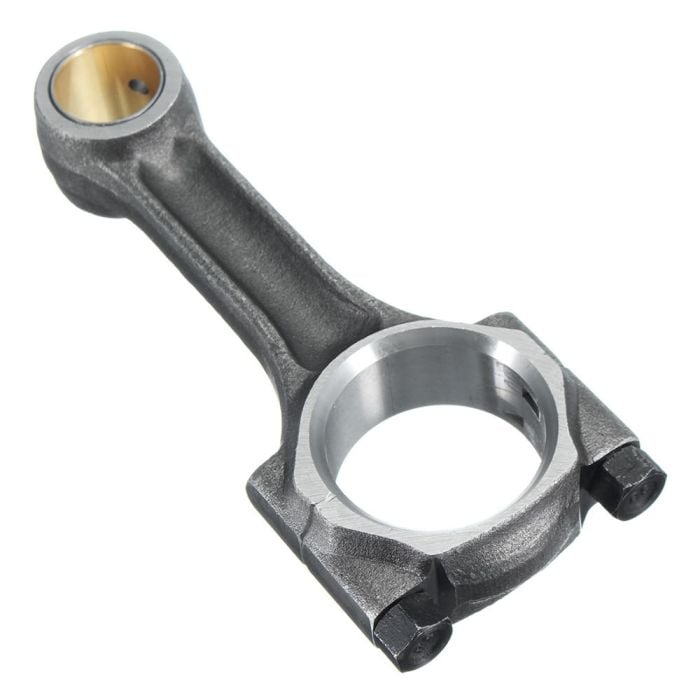Get a high-efficiency clp engine for your equipment.
Get a high-efficiency clp engine for your equipment.
Blog Article
Just How a Clp Engine Can Enhance Efficiency in Different Industries
The development of CLP engines marks a substantial shift in operational effectiveness across different fields, driven by their ability to optimize fuel consumption and reduce downtime. As organizations significantly prioritize sustainability along with performance, the function of CLP engines comes to be even more vital.
Summary of CLP Engines
CLP engines, or Continuous Fluid Propellant engines, represent a substantial innovation in propulsion innovation, especially for space applications. These engines make use of a continual feed system that permits the continual expulsion of propellant, bring about improved performance and efficiency contrasted to traditional solid or hybrid propulsion systems. By preserving a continuous circulation of liquid propellant, CLP engines can achieve much more exact thrust control, which is vital for maneuvering spacecraft in different mission scenarios.
The style of CLP engines incorporates advanced materials and cutting-edge fuel management systems. clp engine. This leads to reduced weight and raised integrity, essential variables for long-duration space goals. In addition, the continual procedure decreases the threat of burning instability, a common challenge in conventional rocket engines.

Advantages in Manufacturing
The production of Continual Liquid Propellant (CLP) engines provides a number of significant benefits that improve both efficiency and cost-effectiveness. Among the main benefits is the structured manufacturing procedure, which lowers the complexity associated with conventional propulsion systems. By utilizing liquid propellant, makers can achieve greater accuracy in engine performance, resulting in enhanced energy outcome and lowered waste.
Additionally, CLP engines promote a greater degree of modularity, enabling much easier assimilation right into different manufacturing lines. This flexibility can significantly reduce lead times and boost total operational versatility. Making use of CLP modern technology additionally has a tendency to reduce the requirement for extensive upkeep due to less moving parts, which translates into lowered downtime and functional costs.

Applications in Logistics
Leveraging Continuous Fluid Propellant (CLP) engines in logistics provides considerable benefits in functional efficiency and reliability. These engines offer a robust service for various transportation needs, making it possible for the smooth activity of products across huge distances. The integral style of CLP engines permits for regular power output, which equates right into smoother and more foreseeable transportation routines.
Among the vital applications of CLP engines in logistics is in durable freight transport, where they can drive both ground and aerial cars. Their ability to keep high performance under differing lots problems makes sure that shipment timelines are met, therefore improving client complete satisfaction. Furthermore, CLP engines can find out here be incorporated right into automated logistics systems, promoting real-time tracking and enhancing route planning.
In addition, the durability of CLP engines minimizes upkeep downtime, enabling logistics business to optimize their operational capabilities. This is particularly advantageous in warehousing procedures, where performance in handling and delivering items is vital. As logistics continues to progress, the combination of CLP engines stands for a forward-thinking approach that not just boosts efficiency however also supports the sector's growing needs for reliability and rate.
Influence on Power Performance
Just How do Continuous Fluid Propellant (CLP) engines improve energy performance in transportation? CLP engines make use of a consistent circulation of fluid gas, enhancing burning processes and keeping a secure drive result. This style reduces energy losses linked with typical burning engines, where fuel shipment can vary and bring about ineffectiveness.
The constant operation of CLP engines enables an extra effective thermal cycle, leading to greater details impulse contrasted to standard engines. clp engine. This equates to minimized fuel usage for the very same amount of job done, significantly reducing operational costs across different transport fields, consisting of air travel and maritime sectors
Moreover, the capability of CLP engines to keep ideal efficiency under varying load conditions decreases the need for regular velocity and slowdown, better improving fuel performance. Enhanced power effectiveness not just adds to cost financial savings however also causes reduce greenhouse gas exhausts, aligning with international sustainability goals.
Future Trends and Innovations
Emerging advancements in Continuous Fluid Propellant (CLP) engine technology guarantee to revolutionize the landscape of transport efficiency and sustainability. As industries pivot toward greener choices, CLP engines stand at the forefront, incorporating ingenious materials and design methodologies that boost efficiency while lessening environmental impact.
One of one of the most promising patterns is the adoption of crossbreed systems that combine CLP engines with sustainable energy resources. This synergy can maximize fuel usage and decrease exhausts, straightening with global sustainability objectives. Additionally, improvements in computational liquid characteristics (CFD) are helping with the style of more aerodynamically reliable engines, resulting in reduced drag and enhanced gas effectiveness.
In addition, the advancement of clever monitoring systems is set to improve functional effectiveness. These systems leverage data analytics and IoT technology to optimize engine performance in real-time, guaranteeing that the engines operate site within their most effective specifications.
As research remains to discover different propellant solutions-- such as biofuels and synthetic gas-- the future of CLP engines looks promising. By harnessing these innovations, sectors can not only boost their efficiency yet also add dramatically to a cleaner, more sustainable future in transportation.
Conclusion
In verdict, CLP engines stand for a considerable advancement in performance throughout numerous sectors. The integration of sophisticated products and fewer relocating parts lessens maintenance demands, while alignment with sustainability goals settings CLP engines as a crucial innovation for the future.
Report this page